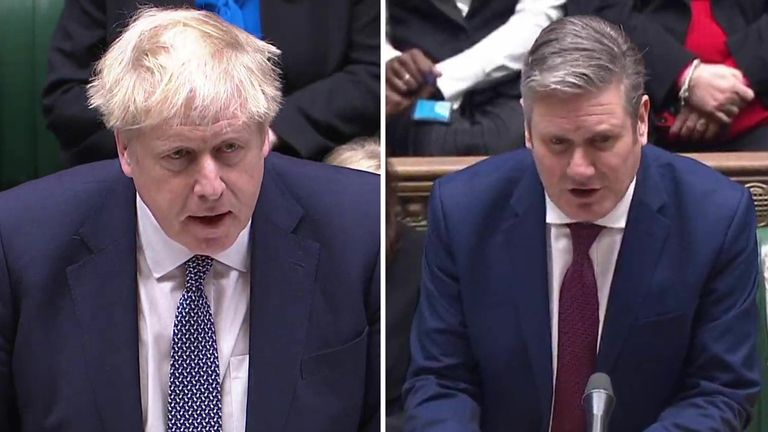Boris Johnson’s landslide general election victory in 2019 secured his position in Number 10, but he can only stay in post with the backing of Conservative backbench MPs – and there are signs he could be at risk of losing that support.
The prime minister’s admission that he attended a Downing Street garden party during England’s first national lockdown comes on top of a series of scandals around COVID rule breaches, lobbying and the funding for the refurbishment of his flat.
The leader of the Scottish Conservatives has already called for him to quit, and even his allies have told Sky News they are “in despair”, fearing his leadership may have been dealt a fatal blow.
So what would it take for Mr Johnson to be ousted by his party, and how would the process work?
Letters of no confidence
Since the end of November, rumours have been swirling that letters of no confidence were being sent to the influential 1922 Committee of Conservative backbenchers.
The committee meets weekly when parliament is sitting, with the gatherings usually providing an indicator of backbench support for the leadership, direction of the party or major policies.
Often referred to as “the men in grey suits”, the 1922 Committee is led by an 18-member executive committee with a chair elected by committee members.
MPs disgruntled with their party’s current leadership can submit no-confidence letters to the committee’s chairman, registering their disapproval.
The Conservative Party rules state that at least 15% of Tory MPs must write a no-confidence letter to make a leadership challenge possible.
This figure currently equates to 54 Conservative MPs needing to submit a letter to 1922 Committee chairman Sir Graham Brady.
Letters are handed in confidentially, so no accurate total of how many have been submitted to Sir Graham is publicly available.
He is therefore likely the only person who knows the real tally.
In 2018, when former prime minister Theresa May faced a no-confidence vote after the then threshold of 48 letters was reached, Sir Graham said not even his wife knew how many MPs had written to him.
If the 1922 Committee received 54 letters from backbench Conservative MPs, a vote of no confidence would be triggered.
Tory MP Sir Roger Gale has said the PM is already on “very thin ice indeed”, telling Sky News he has written to the 1922 Committee saying he believes there should now be a leadership contest within the party.
A vote on the party leadership
If 54 no confidence letters are received, a confidence vote will be held.
It will take place in the form of a secret ballot where all Conservative MPs will have to decide if they back the current leader or not.
The ballot is usually open for a few hours on one particular day, and Mr Johnson would have to secure the backing of half of his MPs plus one to survive.
If a vote did take place and Mr Johnson was to gain the backing of the 181 MPs needed he would be immune from a further challenge for another year.
If he were to lose, there would be a leadership contest and he would be barred from entering.
However, if Mr Johnson were to just scrape enough votes to allow him to stay on, he could decide to stand down of his own accord – automatically triggering a leadership contest.
A leadership contest
If a Conservative Party leader does not secure the confidence votes required, a leadership contest will be held to replace them.
The 1922 Committee would set the timetable for the contest.
To take part in the race, a Tory MP has to be nominated by two colleagues.
If more than two MPs put themselves forward and secure the nominations of two other colleagues, a series of secret ballots will be held to whittle them down.
Follow the Daily podcast on Apple Podcasts, Google Podcasts, Spotify, Spreaker
The individual who receives the fewest number of votes will be eliminated after every round until two candidates remain.
When just two MPs are left in the race, party members get to make their final choice before a deadline set by the 1922 Committee.
The winner will become Conservative Party leader and PM if the party is in power and a general election is not held.



